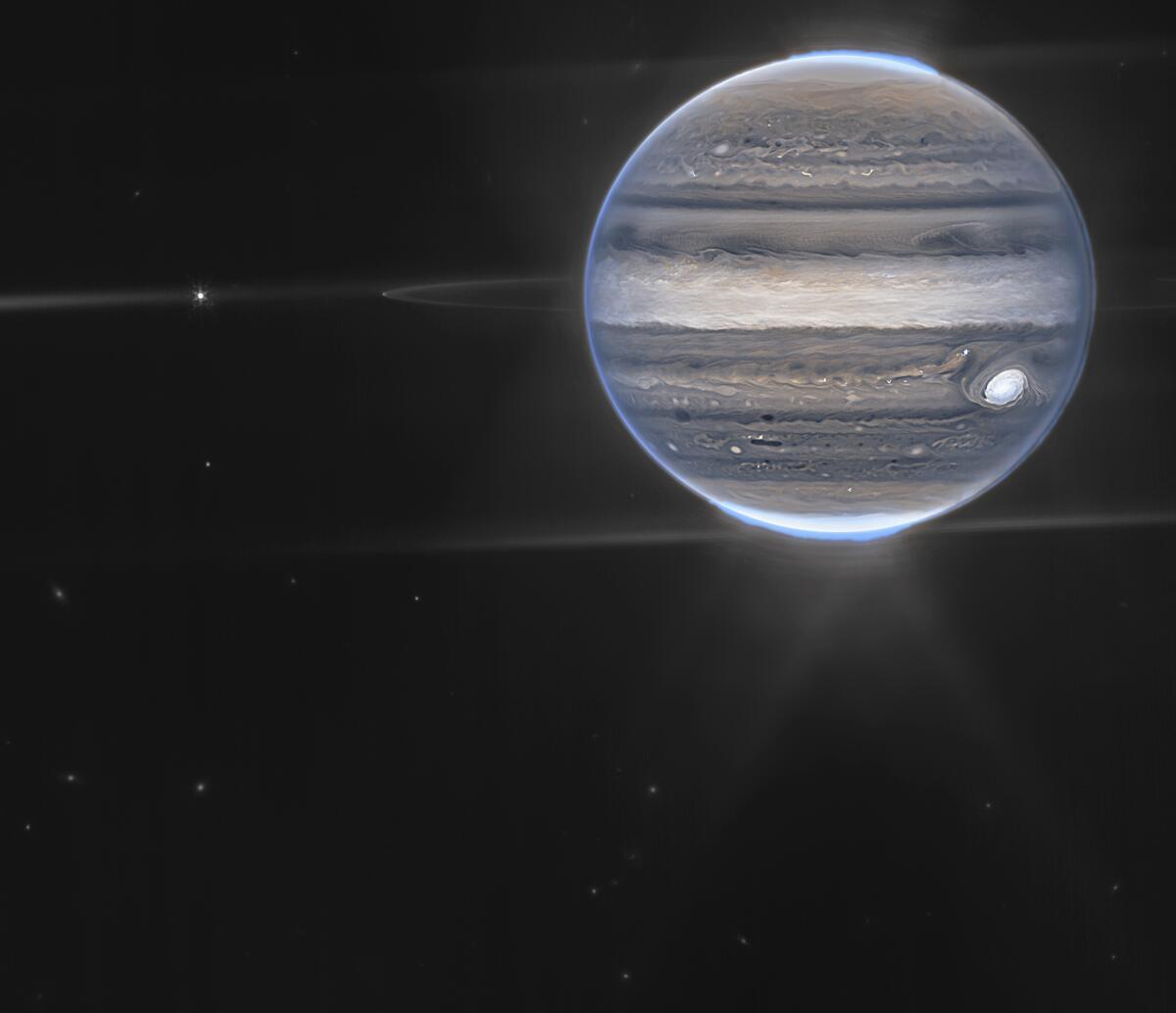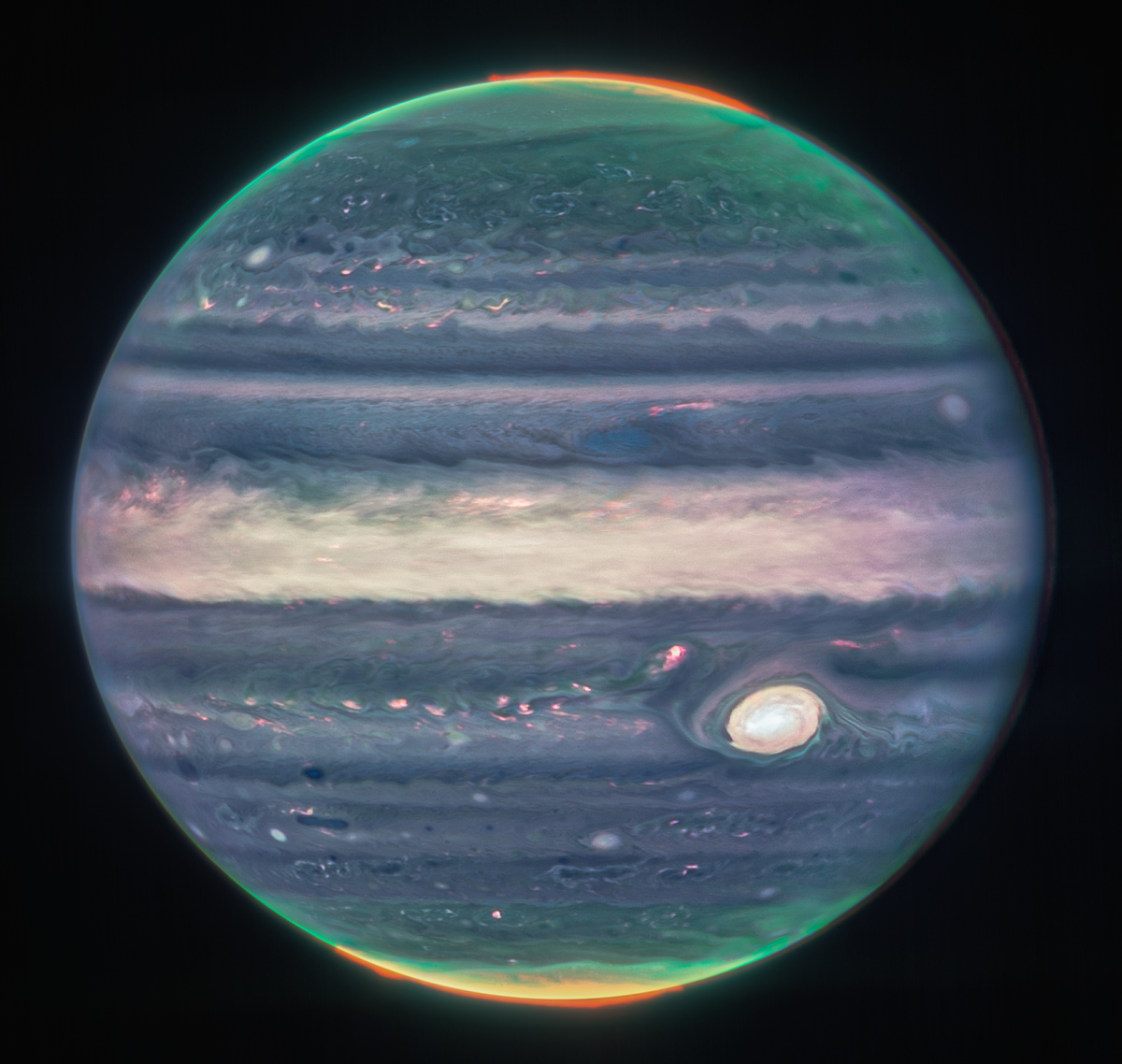Jupiter’s auroras shine in new images from James Webb Space Telescope

- Share via
CAPE CANAVERAL, Fla. — The world’s newest and biggest space telescope is seeing Jupiter as never before, auroras and all.
The James Webb Space Telescope took the photos in late July, capturing unprecedented views of Jupiter’s northern and southern lights, and swirling polar haze. The planet’s Great Red Spot, a storm big enough to swallow Earth, stands out brightly alongside countless smaller storms.
One wide-field picture is particularly dramatic, showing the faint rings around the planet as well as two tiny moons against a glittering background of galaxies.
The images of the solar system’s biggest planet were released Monday.

“We’ve never seen Jupiter like this. It’s all quite incredible,” said planetary astronomer Imke de Pater of UC Berkeley, who helped lead the observations.
“We hadn’t really expected it to be this good, to be honest,” she added in a statement.
The infrared images were artificially colored in blue, white, green, yellow and orange to make Jupiter’s features stand out, according to the U.S.-French research team.
Among the first users of the new James Webb Space Telescope will be graduate students preparing to hunt for the earliest galaxies.
NASA and the European Space Agency’s $10-billion successor to the Hubble Space Telescope has been observing the cosmos in the infrared since summer. Scientists hope to behold the dawn of the universe with Webb, peering all the way back to when the first stars and galaxies were forming 13.7 billion years ago.
The observatory is positioned 1 million miles from Earth.







